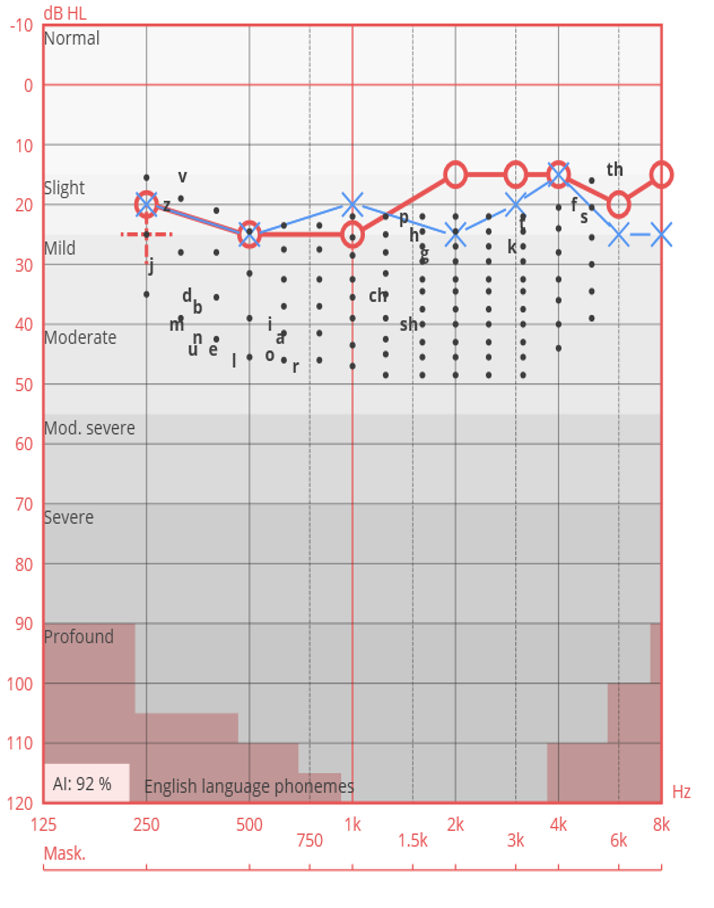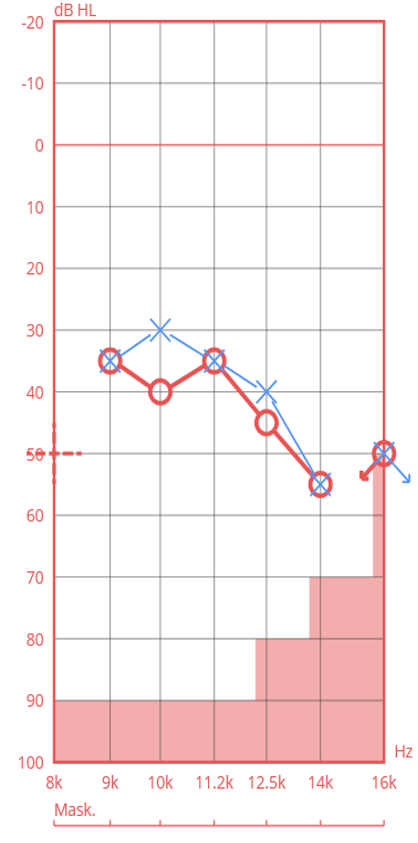Question
When is ultra high-frequency audiometry clinically useful?
Answer
Ultra high-frequency audiometry can be very useful in two common clinical situations:
- when testing people with normal or near-normal hearing thresholds on the standard audiogram who report significant perceived hearing difficulties;
- when testing people with normal or near-normal hearing thresholds on the standard audiogram who have bothersome tinnitus and/or hyperacusis.
Explanation:
It is paradoxical that people who present clinically with significant hearing loss can sometimes have few perceived hearing difficulties, yet people who present with slight/mild hearing loss (or hearing that is “within normal limits”) can sometimes have many perceived hearing difficulties.
We need clinical equipment that can detect abnormalities in the auditory system, if they exist, outside of the standard-frequency pure tone audiogram.
Ultra high-frequency audiometry gives us the ability to dig deeper when investigating potential explanations for a person’s perceived hearing difficulties or possible source of their tinnitus/ hyperacusis; when the standard audiogram is within the normal limits, or only slightly elevated, it is the obvious next step to take in search of an underlying cause for their symptoms.
For the clinician, understanding more about a person’s hearing ability across a broader spectrum is both interesting and helpful in informing treatment plans; for the patient, when we find that there is an ultra high-frequency hearing loss that potentially explains the problems they came to see us for, they receive validation and satisfaction simply from knowing the potential root of the problem; and that is very comforting, if nothing else.
Below is a case example:
47 year old female, referred by ENT to investigate constant, bothersome bilateral tinnitus which has been present for 8 years but has gotten significant worse in the past few years. The patient feels her tinnitus interferes with her hearing ability and concentration; it is so troublesome that she scores in the “severe” range on the Tinnitus Handicap Inventory (THI).
See below for results: the standard audiogram shows that her thresholds are “within normal limits” but the ultra high-frequency audiogram tells a much different story.
Standard Pure Tone Audiometry

Ultra High-Frequency Audiometry

Resources for More Information
For more information, visit https://www.inventis.it/en-na

